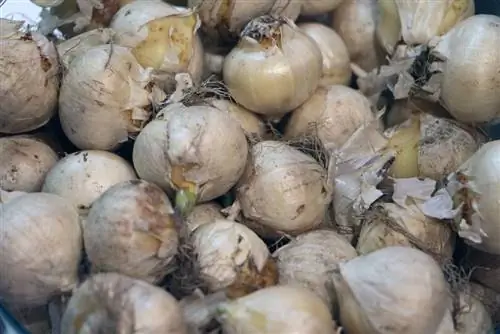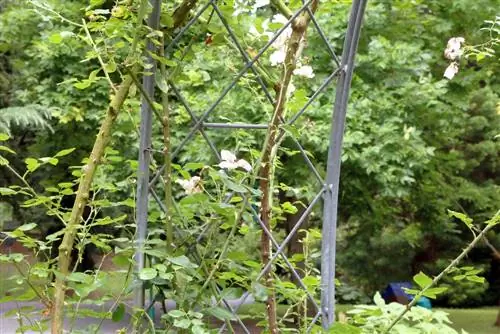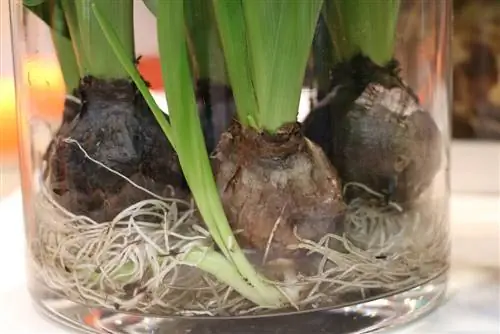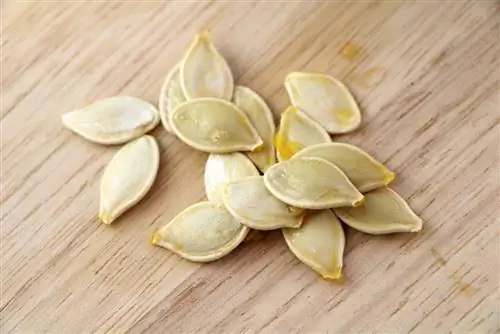- Author admin [email protected].
- Public 2023-12-17 03:39.
- Last modified 2025-01-24 12:45.
Do you want your garden to be colorful in spring? Do you want to enjoy large, colorful spots in the beds? Do you dream of splashes of color in your lawn? Or do you prefer lush blooms and tone on tone? With little money, little effort, a little know-how and fresh flower bulbs, you can fulfill your dream of a colorful garden. Plant long-lasting bulbous plants such as hyacinths, tulips and daffodils in autumn until November.
In the following article you will find out which locations you should choose for flower bulbs and what you need to consider when planting so that you can relax in your own colorful oasis next spring.
When are flower bulbs planted?
From around August onwards, a wide range of different flower bulbs can be found at florists, garden centers and hardware stores, but also online retailers. From simple and inexpensive varieties to unusual exotic varieties, everything is there.
Start shopping in the fall and plant the bulbs as soon as possible after shopping. If this is not possible for you, you can store the onions in the vegetable compartment of the refrigerator for a while. Flower bulbs keep best at 10 to 15 degrees Celsius.
It is still possible to plant the onions in the ground until November, but it must be done before the first frost, otherwise the onions will die. An earlier planting date ensures stronger roots, but does not affect the flowering date.
Which onions should I buy?
When you buy flower bulbs, pay attention to the following things:
- Only buy fresh onions that are large and firm.
- You can safely leave onions that are already very dry. They will most likely not sprout again next spring.
- Keep your hands off flower bulbs that have already sprouted. They have often already used up a lot of nutrients and have less strength to grow next spring.
Offers in hardware stores often seem quite cheap. However, you get a mix of different varieties there. However, you usually won't get enough onions of one variety to create an attractive picture in spring. Many onion plants only reveal their true splendor when they are planted in large numbers.
The following onions have proven to be grateful and inexpensive varieties:
- Crocuses
- Märzenbecher
- Snowdrops
- Grape Hyacinths
- Tulips
- Dwarf Iris
- Hyacinths
- Daffodils
- Easter bells
Smaller varieties are well suited for planting in rock gardens.
Where can I find the ideal spot in the garden?
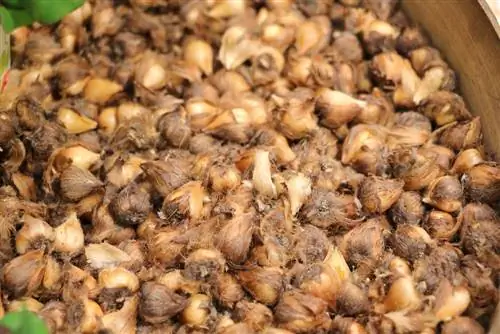
Onion plants prefer sunny and open locations. If you plant the bulbs in shady places, you will most likely only get plants with small and stunted flowers. This also applies to varieties such as the ray anemone or the squill, which thrive in local deciduous forests. They bloom before the trees bud and still receive enough sunlight in spring through the bare branches.
Onion plants love water-permeable and nutrient-rich soil. You should loosen very firm soil well before planting the bulbs, for example by digging it up. If you have very clayey soil in your garden, sand drainage in the planting pit prevents the bulbs from rotting in the soil.
How do I plant flower bulbs?
To clear up a widespread uncertainty: place flower bulbs with the tip, i.e. the growing point, upwards in the planting pit. It is best to dig the pit with a small planting shovel. When digging several planting pits, pay attention to the distance between the bulbs. Large onions require around eight centimeters of space; for small varieties, a planting distance of two to five centimeters is sufficient. Do not plant the bulbs all over the area, but rather form small groups, also called clumps or tuffs. This creates a more beautiful picture in spring.
Flower bulbs are planted at a depth approximately twice their height; If the soil is very loose, it can easily be three times the height. In this way, the plants find enough support from below and at the same time are protected from the winter frost from above.
Fill the planting pits with soil and press them lightly. Moisture-loving varieties should be watered well immediately. To protect against voles and other rodents, you can place the bulbs in special plant baskets that reliably protect them from being eaten. When using plant baskets, you should always create a sand drainage about two centimeters thick in the planting pit.
Special planting methods
If you want to create a veil of tall tulips over a flower bed, or want to ensure a longer blaze of color in the bed, the tier method is ideal. This special planting method is also called the tier or lasagna method because of its technique.
To do this, excavate the entire area where the flowers are to appear at least as deep as a spade. Now place the bulbs that sprout latest on a sand drainage and cover them with a layer of soil. Place the next layer of onions on top of this top layer. These can be medium-sized plants that bloom a little earlier. Cover this bulb layer again with soil and plant early bloomers such as crocuses or snowdrops at the top.
With this method you can create an eye-catcher from spring to autumn with little effort.
Interesting facts
The planting should then take place in such a way that the flower bulbs are simply scattered under a wild shrub hedge and a thin layer of soil is spread over them. You should also mix the soil with compost. A layer of bark mulch may be able to cover the entire soil. A natural environment is then created for these flowers and they can bloom again every spring.

Some flower bulbs can be kept planted all year round. A colorful garden requires perseverance and skill. While daffodils and crocuses, for example, can overwinter in the ground outside and should be planted by the end of October so that enough roots can form, other flower bulbs have to be dug up in the fall and stored frost-free for overwintering. These flower bulbs include, for example, dahlias and cannas, which can be planted indoors as early as March to accelerate flowering in the wild.
Flower bulbs need to be watered regularly, but must not remain in a pool of liquid. To loosen the soil a little and allow water to drain away, the soil should be loosened with sand.
There are also some types of tulips that can be used this season for spring next year.
Tulip flower bulbs, for example, can now be bought at any nursery. When buying tulip bulbs, you should make sure to buy nice, large bulbs, because when it comes to tulips, the motto is that the larger the bulb, the more beautiful the flower will be.
To drive away any voles or moles from your own garden paradise, you could simply plant several imperial crowns between the colorful beds.
Conclusion
Flower bulbs are a simple and inexpensive way to create an impressive display of color in your home garden. Just plant the bulbs in the fall and wait. You can't go wrong as long as you choose a sunny and bright location and plant the bulbs with the growing point facing upwards. Special plant baskets help against mice eating; You can prevent rot with drainage made of sand in the planting pit.



